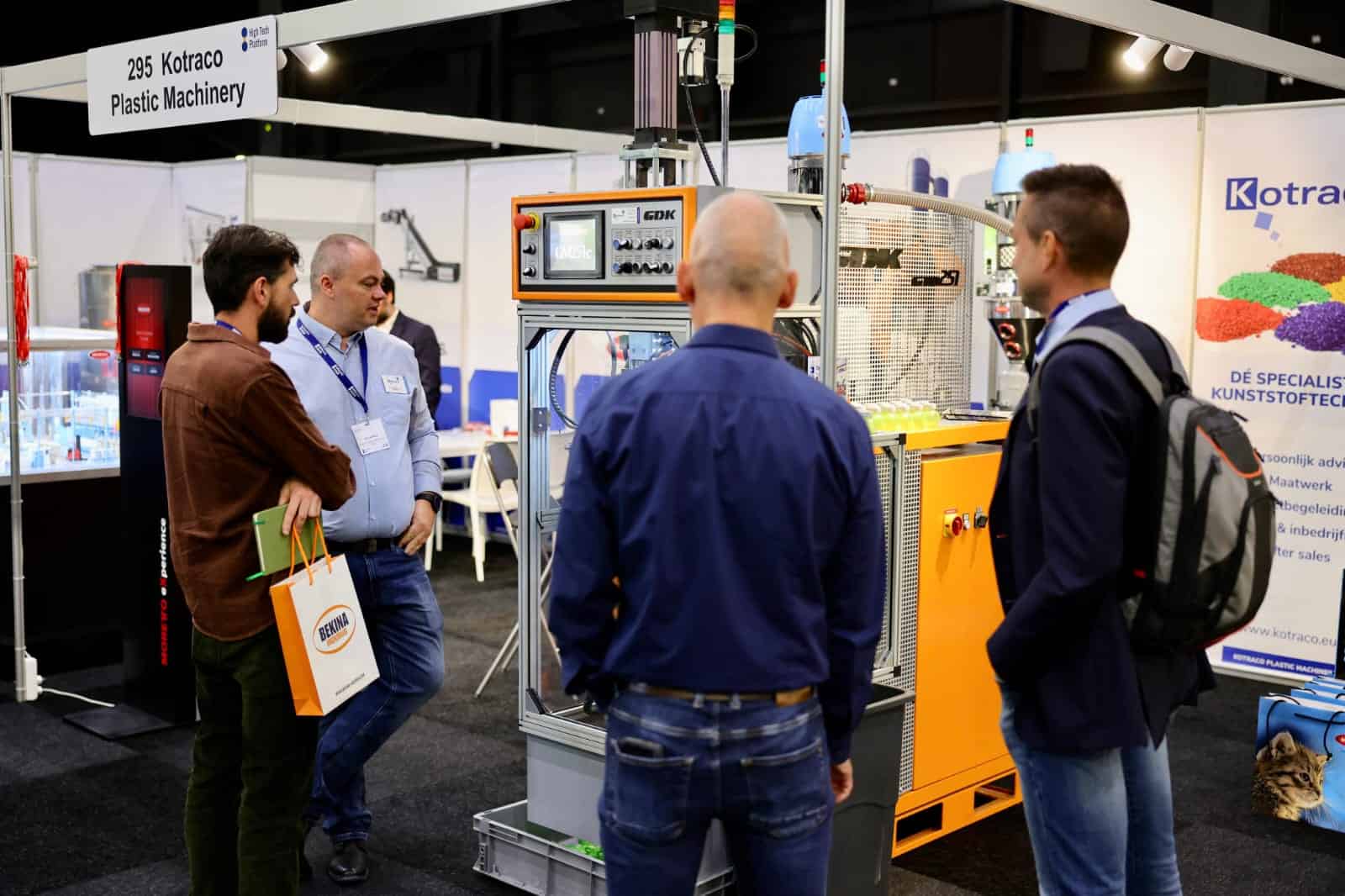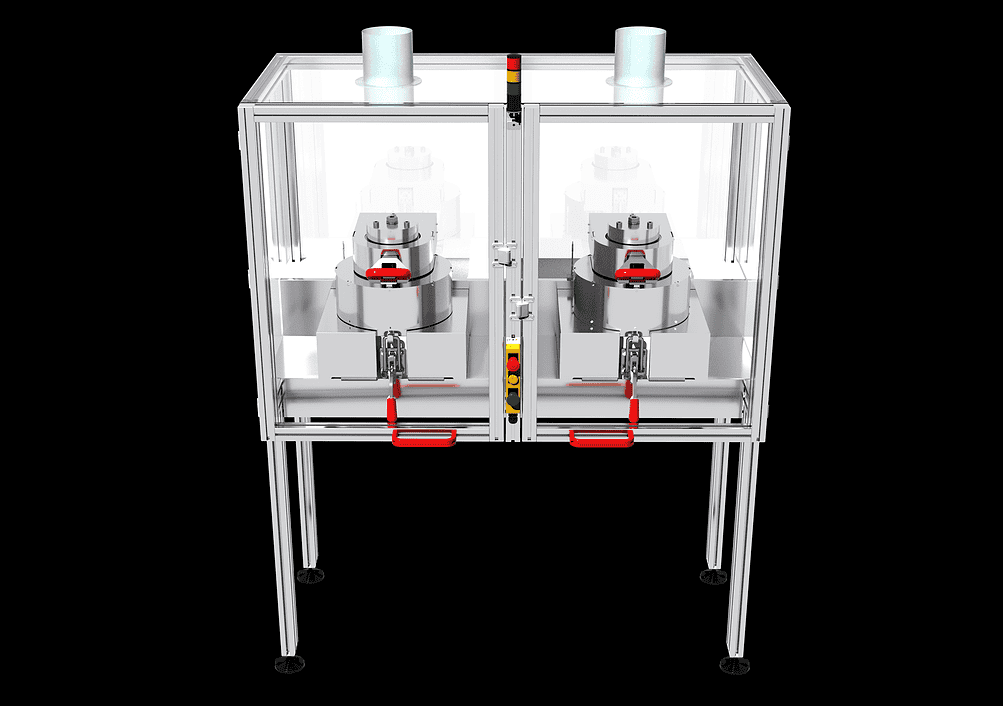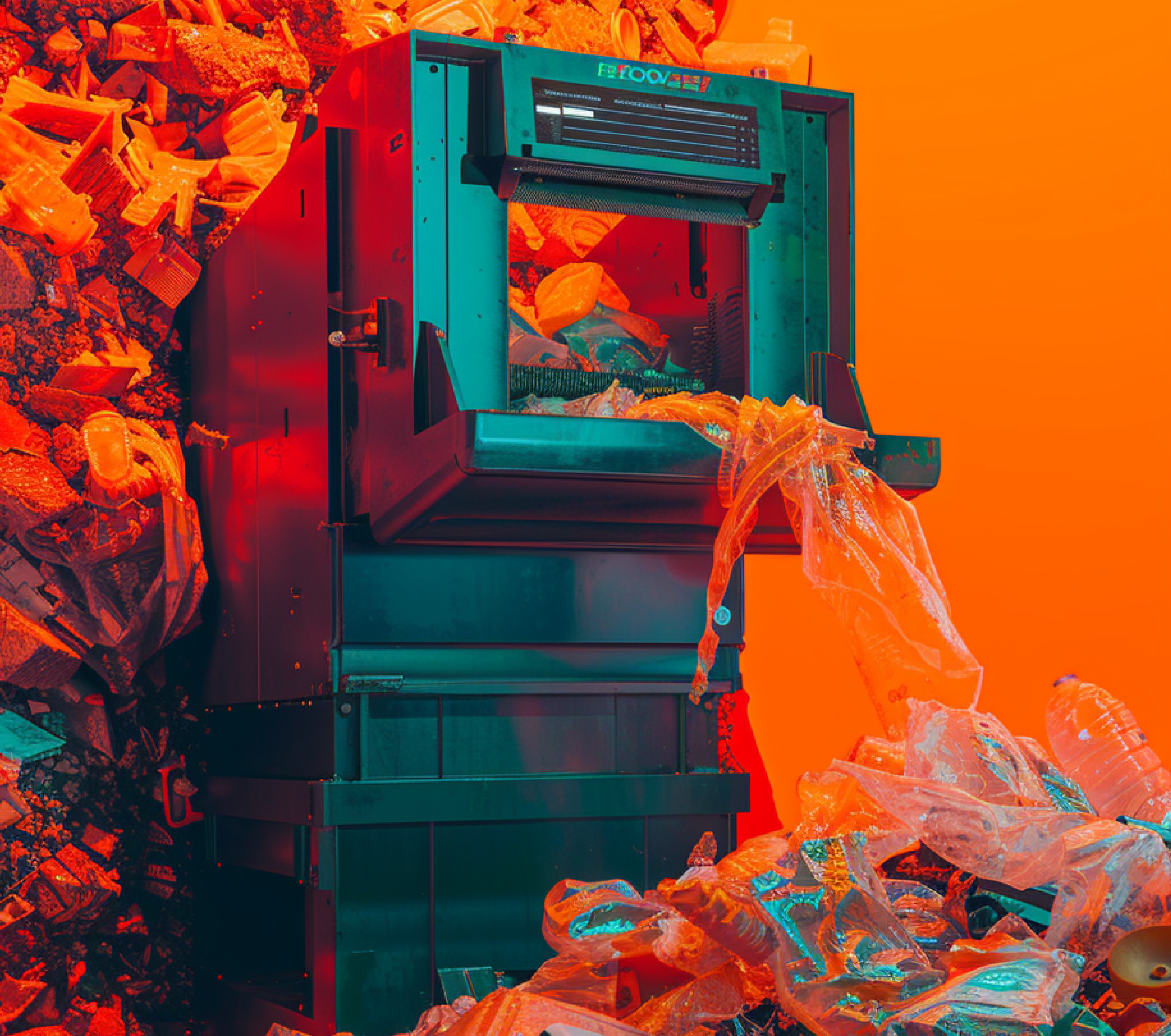
A mattress made of recycled plastic, a circular helmet, or sustainable Lego bricks. The subject of the anniversary edition of the Kunststoffenbeurs leaves little to be guessed: sustainability and circularity are the order of the day.
They have to be because the Transition Agenda on Plastics states that by 2030 the sector must use 40% recyclate and 15% bio-based plastics. Last week, the Brabanthallen in Den Bosch filled up with entrepreneurs, companies, and scientists who want to contribute to achieving that goal. With 225 exhibitors and more than 3,500 visitors from the plastics and rubber industry, organizer Mikrocentrum can look back on a successful 25th edition of the Kunststoffenbeurs. IO was there.
Auping: from countless materials back to two raw materials
The first keynote of the Plastics Fair came from Geert Doorlag, researcher at mattress manufacturer Auping. “Every year, 40 million mattresses are thrown away in Europe. That has to change. Our goal is to be fully circular by 2030,” he kicks off.
The company took the first step with an Auping Take Back system: when purchasing a new mattress, Auping comes to collect the old mattress. That is used for low-value products such as a judo mat.
The second step was understanding “very precisely” what materials were incorporated into the mattresses. A long “Cradle-to-cradle” process preceded this; in 2019, the manufacturer combined all insights into a new product design for a fully circular mattress. Doorlag: “Our Auping Evolve mattress consists of two raw materials we can recycle endlessly: polyester textile and a steel spring. We use Niaga adhesive (a type of glue, ed.) to glue the mattresses together. At the end of the service life, we can reheat this and easily take the parts apart.” The circular mattress line is as expensive as the “normal” line.
Auping also added a product passport to the circular mattress line. Consumers can find all the information about the production process and materials with a QR code. Should they wish to return their mattress, the process is also described. But, just Auping striving to make mattresses circular makes no sense, Doorlag said. “We have agreed with our competitors (including Ikea, Swiss Sense, Beter Bed, ed.) that for every mattress sold, we contribute an amount to a foundation. This way we jointly pay for the logistical process of collecting old mattresses.”
Veridis wants to revolutionize the recycling industry
The biggest problem in plastic recycling is that it is often difficult to separate different types of plastics. The Knowledge & Education Area is home to Eindhoven startup Veridis. They have a clear mission: to make the quality and composition of plastic materials transparent so that high-quality recycling becomes possible on a large scale and high-quality products can be made.
“One plastic is not the other. To make plastic recycling a real success, it is necessary to provide insight into which plastics are top quality and which are not,” says Matthijs Kuil, business developer at Veridis. The company is going to do that with the MADSCAN® t50.

Veridis’ MADSCAN® system is a technology that uses heat to measure how plastic materials (polymers) change when they change shape, such as by melting or solidifying. This is done using a group of sensors that can precisely track these changes. “The system works with samples that are representative of a larger amount of plastic, so it gives good insight into the properties of the whole material,” Kuil said. And that is something that is often lacking now.
In the first quarter of 2025, the pilot version should be tested with the first customers; a year later, the first commercial system should roll off the line. “We started with this idea in late 2020, and the fact that we are now getting closer and closer to the point where we are bringing an actual product to market is very cool,” said an enthusiastic Jeroen Glansdorp, co-founder and CEO of Veridis.

A sustainable injection molding process
Between the Innovation Area and the Plastic Recycle Lab stands Injection Point. A fitting spot: The company focuses on the design of sustainable plastic injection molding processes.
Manager of Operations Mike de Werd: “We make products and produce with minimal environmental impact using recycled plastic, energy efficiency, and waste reduction. As you can see, that can be anything.”
It has been a constant search, says owner Cristel Rijnen. She founded Injection Point in 2011, initially as a “normal” injection molding company. That changed when she noticed that so much good-quality stuff was being thrown away. “I was looking for a way to give those items a second life. I can’t change the whole world, but my own business can. So, we are fully committed to sustainability. Whether that’s completely successful? No. But, our goal is to spread an oil slick.”

And she is succeeding. In 2016, when she focused on a circular production process and working with recycled materials, few companies had any ear for it. Now, everyone wants “something with sustainability.” So there is a wide range of products on display. The Brabant-based company produced a sustainable eyewear case for Ace&Tate, an excellent cover for Fairphone and Renewi, and Crease Guards for DFNS. “These are plastic shoe inserts that help prevent creases in the toe area of sneakers,” De Werd explains. “We have been working on this for eight years. It has been difficult for a long time, but now we are ahead of others.”
At the 25th edition of the Plastics Fair, plastics and rubber companies, she gained inspiration for sustainable and circular product development and processes. Also, next year, Mikrocentrum aims to use the fair to bring together the entire Benelux plastics and rubber chain. One thing is clear: showing courage and having an eye for social importance pays off.

